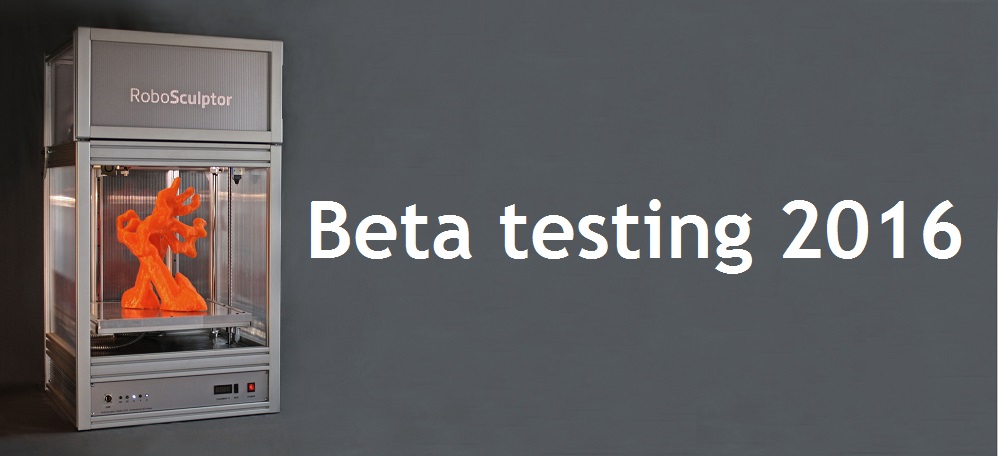The continual testing of the RoboSculptor has finally yielded its first large scale print. There were several failed attempts during the initial trials after glitches were encountered in several parts of the system. Apparently key components that I previously held infallible were not appropriate for larger print runs, but the problems were rectified and now the system is ready for some serious work.
The first large scale print almost maxes out at 18 inches high. The width and length floated somewhere within the 13.5 x 15 inch XY plane.
Slicing the model has been problematic with most of the open-source slicers. The model has 588,544 polygons and the STL file is 28MB in size! I had problems with memory allocation with Skeinforge and Slic3r was unstable. Cura seems stable and it completed without apparent errors, though it was slow and unresponsive at times. The best solution was to use the commercial slicer Simplify3D.
Repetier-Host and Printrun have been my favorite hosts, but both are heavily burdened with such large files. Printrun develops memory buffer errors and is unstable. The best solution was to use Simplify3D as the host as well..
Of course with the support material that is generated, the print becomes even larger and this in turn uses more filament. 3 rolls of 1kg semi-transparent orange PLA was required.
This is the longest print run to date. The entire print time for this sculpture was 3 days and 14 hours!
Once the print was finished, the support was pulled away from the sculpture. Most of it released easily, though the use of pliers were of great help.
The finished piece can now be lightly sanded and painted.
The sculpture was printed with a 0.4mm layer resolution. This would normally be considered a low resolution surface for a smaller print in the 50 to 80mm range, but is actually fairly uniform and unobtrusive for an object in this size range.
An interesting feature about the the semi-transparent filaments is the effect that is achieved when light is shown through the object.
The internal structure of the infill in combination with the layer texture creates a beautiful surface that has to be seen in person to grasp the three-dimensional effect.




















